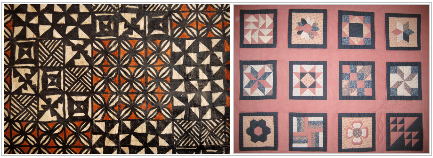Purpose:
You can help your child to have an opportunity to use measurement tools with precision as they create shapes, (traditional) patterns and designs.
What you need:
- Fabrics (such as tapa cloth) that have designs featuring regular geometric shapes such as: square, triangle, oblong (long rectangle), diamond, (rhombus), hexagon (it has 6 sides), circle, oval (a symmetrical oval is called an ellipse)
- Paper
- Coloured pencils or crayons
- A ruler, compass and protractor
- Card, scissors, glue (optional)
What to do:
Make available the ruler, compass and protractor.
Invite your child to make a card or bookmark for a special person or occasion. Have your child suggest an appropriate length and width for this in centimetres.
Have your child choose from the fabrics and explain their choice and what they like about it. If you know about the (cultural) story of the fabric and its pattern discuss this together.
Have your child identify and describe particular features of the design.
With reference to ruler, compass and protractor, have them tell you how features of the design were made. (eg. “A square with sides of 10cm was divided into quarters by making a straight line from 2 corners to their opposite corner, creating 4 right angles triangle around a point in the centre”).
Suggest they replicate the design on the card. Emphasise measuring with precision. Alternatively they may prefer to create and colour a design of their own based on the fabric they have chosen.
What to expect your child to do:
-
Know correct shape names and their identifying features.
-
Know how to use a ruler with precision.
-
Have a developing knowledge of how to measure angles with a protractor and how to draw arcs with a compass.
He Kupu Māori
| circle | porowhita |
| square | tapawhā rite |
| triangle | taputoru |
| rectangle | tapawhā hāngai |
| rhombus | tapawhā whakarara rite |
| oval | porohema |
| ellipse | pororapa |
| arc | pews |
| angle | koki |
| centimetre | mitarau |
| millimetre | mitamano |
| protractor | ine-koki |
| compass | tāporowhita |
Download a file of this activity:
PDF (370KB)
